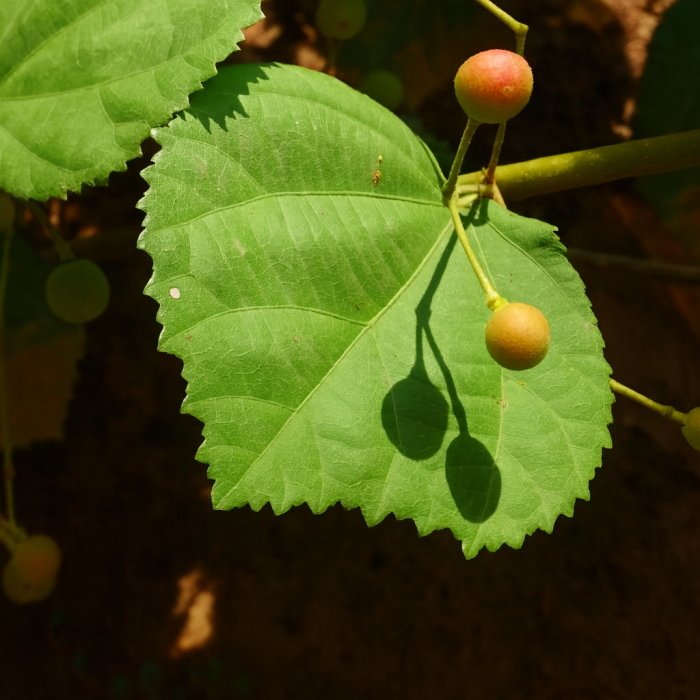Grewia Optiva, Bhimal Plant For Sale In India

SHIPPING IS FREE
This plant thrives in full sunlight. Ensure it receives at least 6-8 hours of direct sunlight daily for optimal growth and leaf production.
In stock
- SKU
- PS69
₹399.00
Description
Grewia optiva, also known as Bhimal or Dhaman, is a hardy, multipurpose tree that thrives in subtropical to temperate regions. Here are five care tips to ensure healthy growth of this plant:
Soil Requirements:
Grewia optiva prefers well-drained, loamy soil. While it can tolerate poor soils, adding organic compost or manure can improve its growth.
Watering:
Water the plant regularly during the growing season, especially in the first few years. Once established, it is drought-tolerant but still benefits from occasional deep watering in dry periods.
Sunlight:
This plant thrives in full sunlight. Ensure it receives at least 6-8 hours of direct sunlight daily for optimal growth and leaf production.
Pruning:
Prune the plant regularly to shape it and remove any dead or diseased branches. Pruning helps promote new growth and maintains the plant's structure.
Pest and Disease Control:
Grewia optiva is generally resistant to pests but watch for signs of leaf-eating insects or fungal infections, especially in humid conditions. Use organic pesticides or neem oil to control infestations.
By following these tips, you can maintain a healthy and productive Grewia optiva plant.
Soil Requirements:
Grewia optiva prefers well-drained, loamy soil. While it can tolerate poor soils, adding organic compost or manure can improve its growth.
Watering:
Water the plant regularly during the growing season, especially in the first few years. Once established, it is drought-tolerant but still benefits from occasional deep watering in dry periods.
Sunlight:
This plant thrives in full sunlight. Ensure it receives at least 6-8 hours of direct sunlight daily for optimal growth and leaf production.
Pruning:
Prune the plant regularly to shape it and remove any dead or diseased branches. Pruning helps promote new growth and maintains the plant's structure.
Pest and Disease Control:
Grewia optiva is generally resistant to pests but watch for signs of leaf-eating insects or fungal infections, especially in humid conditions. Use organic pesticides or neem oil to control infestations.
By following these tips, you can maintain a healthy and productive Grewia optiva plant.
Reviews
Write Your Own Review
